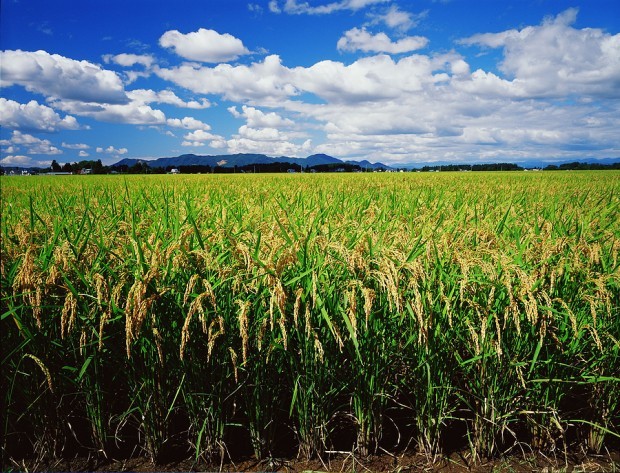U.S. farmers last week finalized their crop insurance plans for spring planting with critics of the government-subsidized program saying insurers are set up for a bonanza after passage of the new five-year farm bill last month.
Farmers who sign up for crop insurance by March 15 won’t, in fact, enjoy the enhanced subsidies of the new federal law, which go into effect with the 2015 crop year.
But grain farmers in 2014 will still see up to two-thirds of their insurance premiums paid for by the government. Private insurance companies will also still benefit from the government as their “reinsurer,” an arrangement critics say limits their losses while boosting underwriting gains.
With the new farm bill, the government’s largesse gets even bigger next year.
“I think taxpayers lost on that farm bill for sure. There was lots of money that could have been saved to reduce the deficit, but they chose not to,” said Bruce Babcock, an agricultural economist at Iowa State University who has studied crop insurance for more than a decade.
“The industry lobbies heavily,” Babcock told Reuters. “It’s just rub my back, I’ll rub yours.”
A new farm bill was held up for more than a year by wrangling over cuts in food stamps and subsidized programs for the poor. Backers also touted cuts in direct payments to farmers estimated by the Congressional Budget Office (CBO) at $40 billion over 10 years. But 80 percent of those savings—some $33 billion, according to CBO data—reappear in the new farm bill as “enhanced” crop insurance, reformers say.
“The crop insurance program survived essentially unscathed in this farm bill,” said Craig Cox of the Environmental Working Group, which sees U.S. farm policies as wasteful to taxpayers. “This was the first farm bill where there was a lot of attention paid to trying to reform the crop insurance program. None of those reforms made it into the final bill.”
Crop insurers, on the other hand, praised the new law.
“For the taxpayer, it eliminated direct payments and reduced some of the price support policies of the past in favor of expanding crop insurance, which is purchased by farmers on an individual basis,” David Graves, president of the American Crop Insurance Association, said in a written response to questions.
“For crop insurance companies, the farm bill underscored the fact that crop insurance is the top risk management tool for America’s farmers and ranchers.”
Three Key Issues
Critics say it is not the theory but the economics of crop insurance they quarrel with.
At the turn of the century crop insurance was still a minor part of U.S. farm policy, averaging about $2 billion a year in the 1990s. By contrast, CBO estimates, even before the new farm bill government crop insurance costs will average $9 billion a year over the coming decade. The new law adds in another $3.3 billion a year to those costs, according to CBO data.
Critics say no one knows if such “savings” will actually be realized since most farmers today opt for insurance that covers expected crop revenue, due to lower prices or crop losses.
“The new savings could turn out to be mythical. If prices decline from astronomical levels which USDA is projecting, these new subsidy programs could pay out far more than CBO estimates of their costs,” Cox said.
Pat Westhoff of the Food and Agricultural Policy Research Institute at the University of Missouri said FAPRI now projects those additional costs at closer to $5 billion a year, not $3.3 billion, and comparable to the old direct payment program.
“The new crop insurance provisions, all else equal, will push up the costs of the crop insurance program,” he said.
Reformers zero in on three costly aspects of the giant crop insurance scheme: subsidized premiums; billion-dollar government payments to insurers for “administrative and operational” costs; and the government’s safety net as “reinsurer” of private insurers.
Bankers and extension advisers say that the government’s share of premium payments averages 60-65 percent for corn, soybean or wheat acreage. Next year, the government will pick up a higher percent of the premiums for up to 86 percent of harvest.
The new law “caps” annual administrative payments to the 19 private insurers at $1.3 billion—an average of $68 million each just for participating in the program. Even so, Graves said that was too low to meet insurers’ costs.
The third government support derives from government as “reinsurer.” Private insurers say they need the government because no one else will insure against crop risk based on the weather.
“If that’s true, then the taxpayer would be better off taking on all the risk and not paying a huge fee to induce the private sector to take on some risk,” Babcock said. “They say it because they don’t want to lose that subsidized reinsurance. Call them on their bluff: OK, if it’s too risky, we’ll take it all on and save billions of dollars doing it.”
But if crop insurance seems wasteful, it is also extraordinarily complex—and secretive.
“Crop insurance is hidden behind a really unprecedented veil of secrecy,” Cox said. “There’s actually statutory language in the federal Crop Insurance Act that prevents the government from revealing a lot of the details.”
Critics point to a special clause tucked into the 2014 Farm Bill diluting the power of the U.S. Agriculture Secretary from trimming payments to crop insurance companies if the basic Standard Reinsurance Agreement is renegotiated.





















 Nearly Half of 100 Largest P/C Insurers Destroy Value: ACORD
Nearly Half of 100 Largest P/C Insurers Destroy Value: ACORD  Good Times for U.S. P/C Insurers May Not Last; Auto Challenges Ahead
Good Times for U.S. P/C Insurers May Not Last; Auto Challenges Ahead  What to Expect in 2026: U.S. P/C Results More Like 2024
What to Expect in 2026: U.S. P/C Results More Like 2024  Underwriter, Actuary Fears of AI Drop; Work Needed on Collaboration
Underwriter, Actuary Fears of AI Drop; Work Needed on Collaboration 
